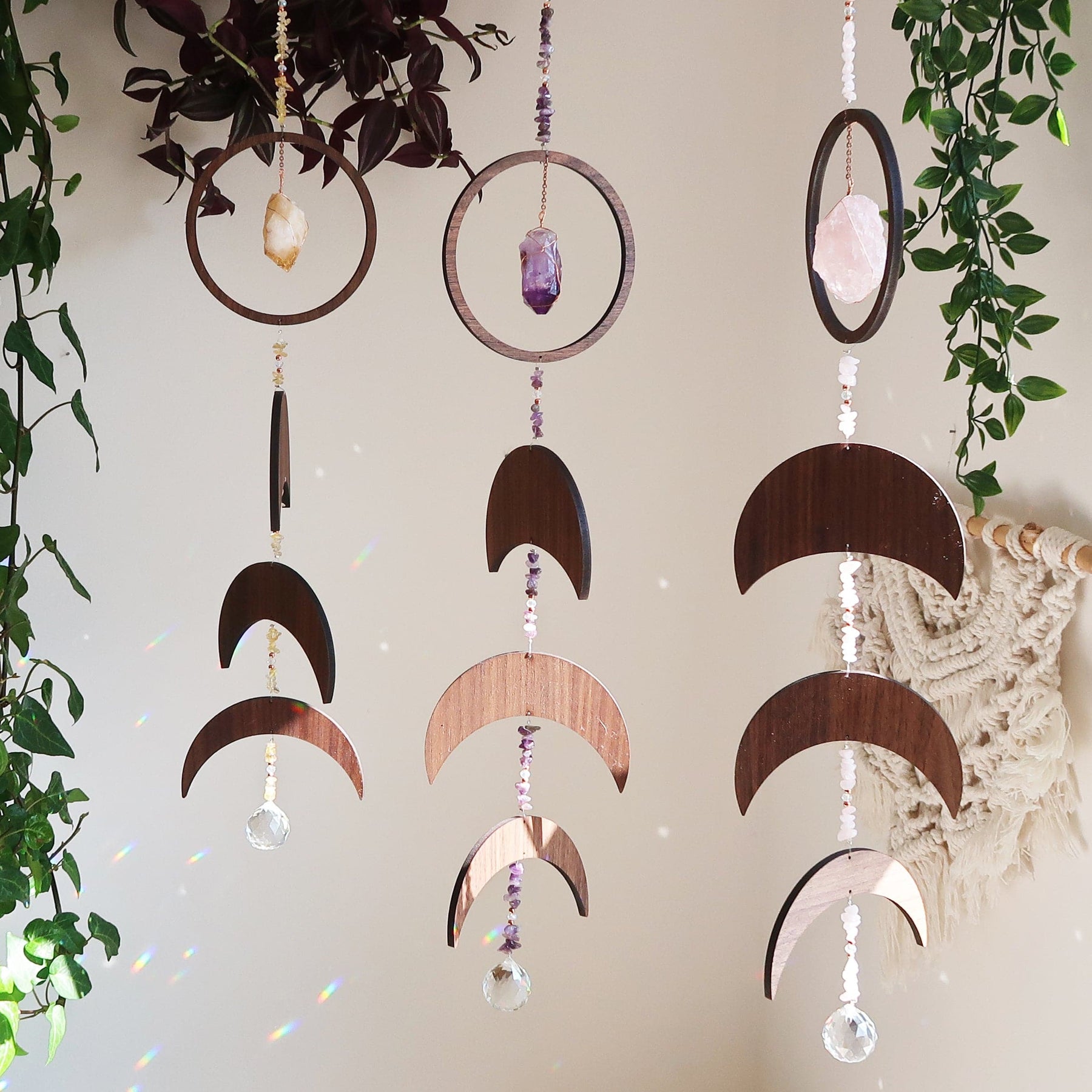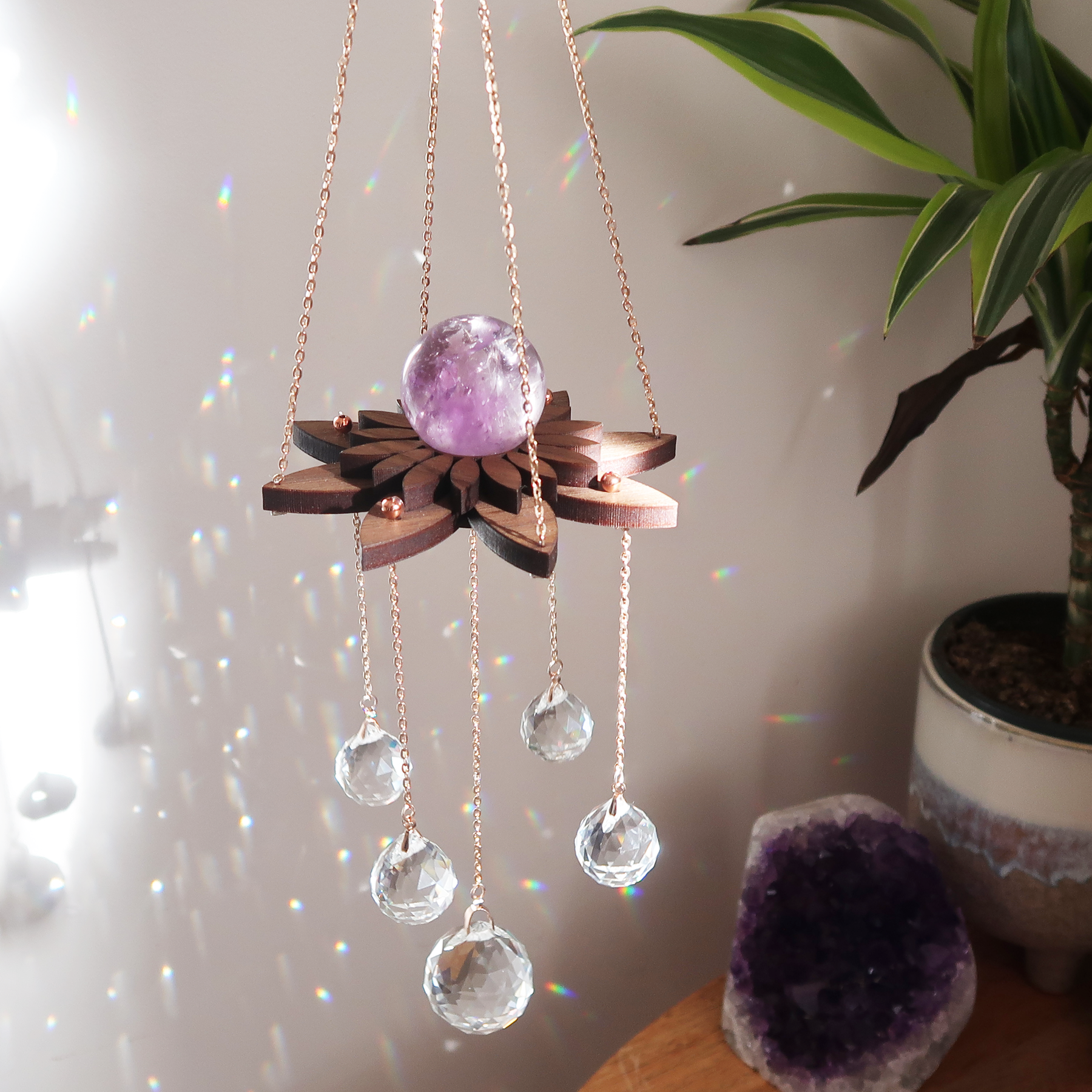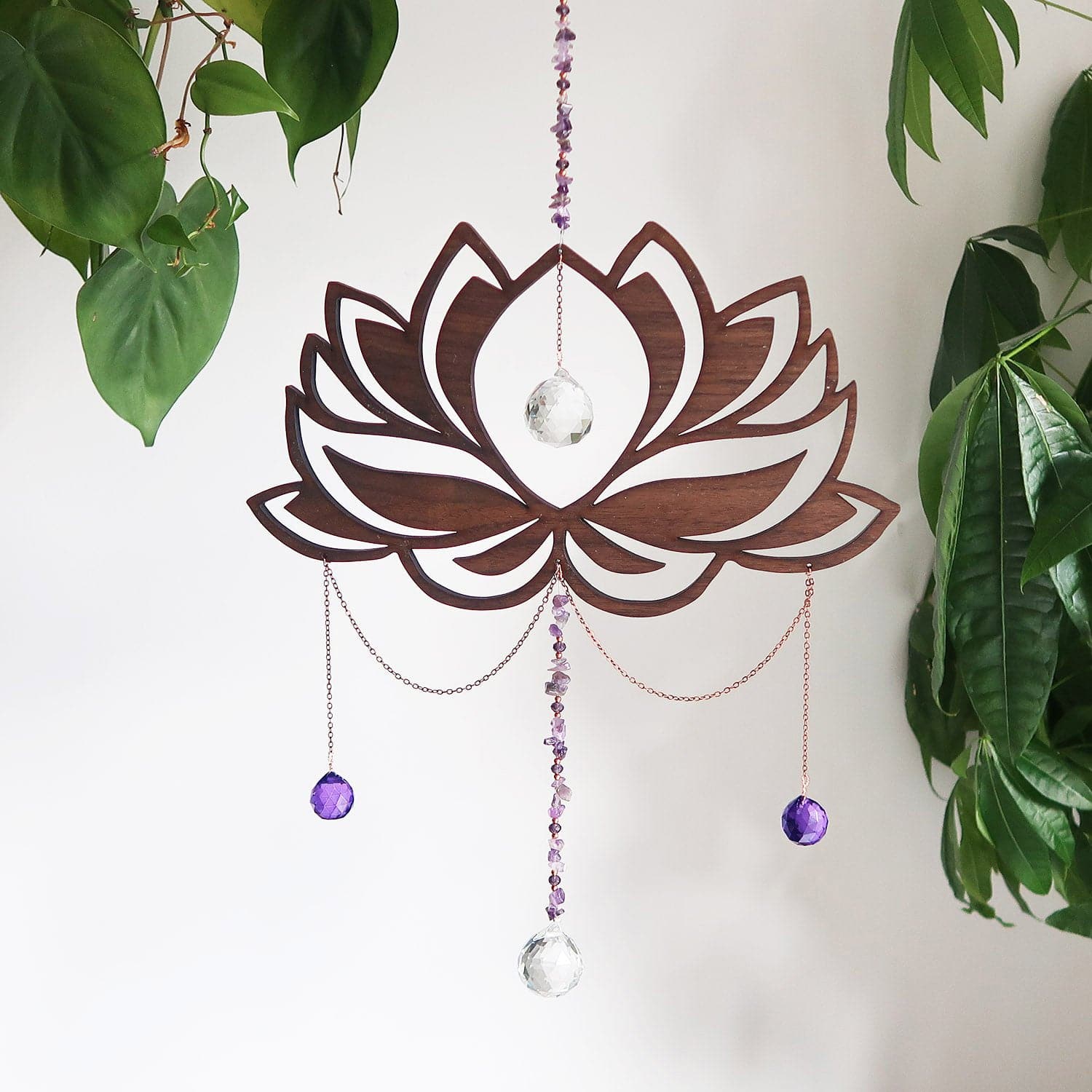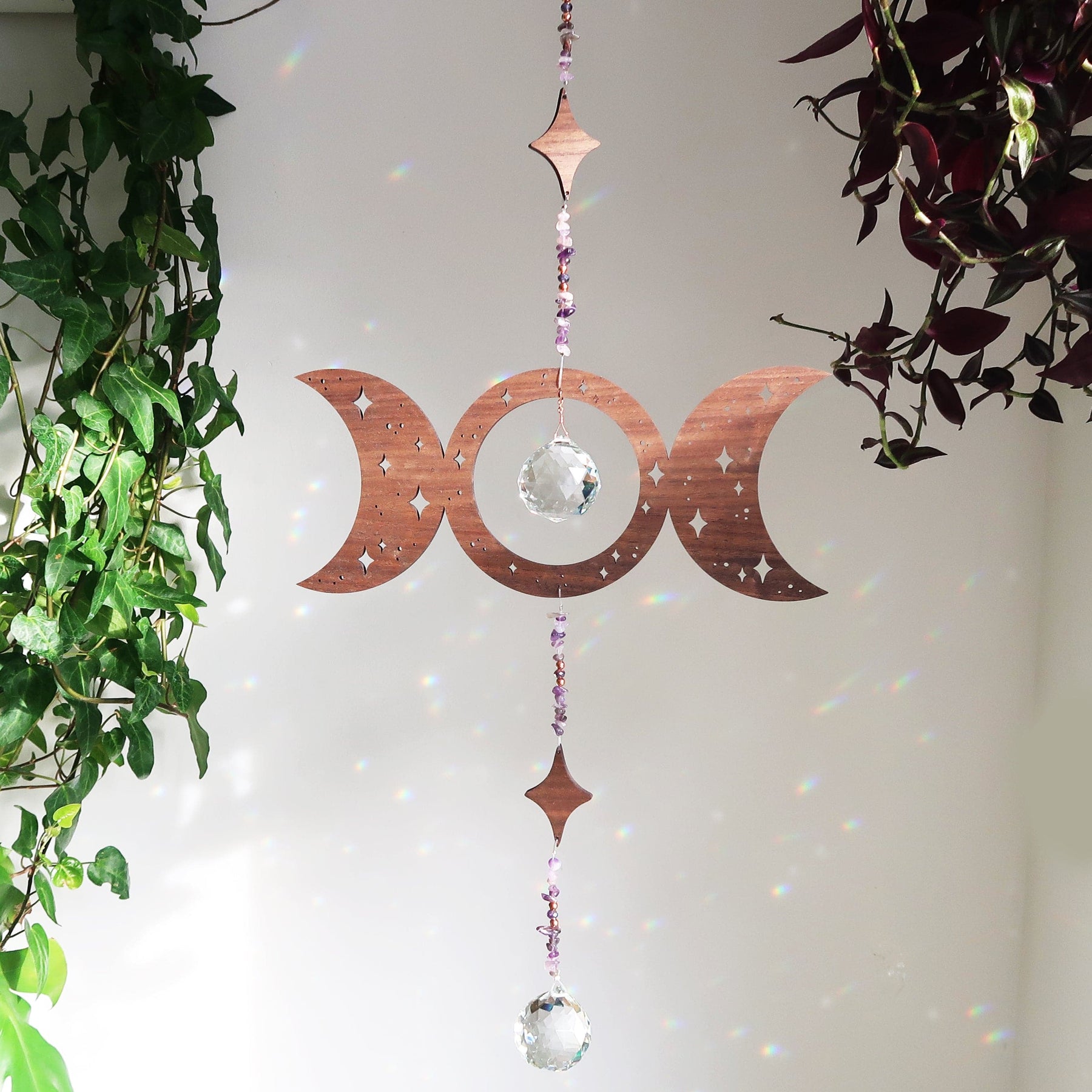Suncatcher vs Stained Glass - 7 Key Differences
Growing up in my grandmother's house, I was always mesmerized by how light transformed through her glass art. The crystal suncatcher cast dancing rainbows across the breakfast table, while the stained glass panel created a rich tableau of colored light that remained static.
Many people use the terms "suncatcher" and "stained glass" interchangeably, but these are distinct art forms.
They have different histories, construction methods, and light effects.
Here are the seven key differences to help you choose the right light art for your space.
1. Historical Origins
Stained glass emerged primarily as a religious art form in medieval Europe, while suncatchers have more diverse cultural origins across multiple societies.
Stained glass:
- Flourished in medieval cathedrals (10th-16th centuries)
- Traditionally used to tell biblical stories
- Required specialized guilds for creation
Suncatchers:
- Appear across Native American, Asian, and European folk traditions
- Often connected to spiritual practices
- Could be created domestically without extensive training
2. Construction Materials
Stained glass involves multiple pieces of colored glass joined with lead came or copper foil, while suncatchers typically feature crystal elements or simpler glass components suspended in light.
Our Moon Phase Crystal Suncatcher exemplifies typical suncatcher construction.

This handcrafted wooden design features moon phases alongside strategically placed crystals.
Unlike stained glass, which requires joining multiple glass pieces, this suncatcher uses natural materials with crystal elements that refract rather than just color the light.
Key differences:
- Stained glass requires cutting and joining multiple glass pieces
- Suncatchers often incorporate crystals, beads, and mixed materials
- Stained glass creates a solid panel, while suncatchers typically have movement
3. Light Interaction
Stained glass primarily filters and colors light, while crystal suncatchers refract light into rainbow spectrums.
Stained glass:
- Colors passing light by filtering specific wavelengths
- Creates stable colored projections
- Effects remain consistent regardless of sun angle
Suncatchers:
- Refract light into spectrum components
- Create moving, changing rainbow patterns
- Effects shift dramatically with sun angle
4. Size and Placement
Stained glass typically requires permanent installation, while suncatchers offer greater flexibility for temporary placement and small spaces.
Our Amethyst Lotus Flower Suncatcher demonstrates this versatility.
This wooden design incorporates amethyst crystals that create sparkling prisms.
Unlike stained glass, which would require window modification, this suncatcher simply hangs from its copper ring in any available window and can be easily moved as sunlight patterns change seasonally.
Placement differences:
- Stained glass often requires professional installation
- Suncatchers can be hung with minimal hardware
- Stained glass is typically a permanent feature
- Suncatchers can easily be relocated seasonally
5. Price Point
Stained glass typically represents a substantial investment, while suncatchers offer a more accessible entry point for enjoying light art.
Typical comparison:
- Custom stained glass: Hundreds to thousands of dollars
- Handcrafted suncatchers: Tens to hundreds of dollars
- Stained glass requires specialized tools and training
- Suncatchers can be created with more accessible techniques
6. Spiritual Applications
Stained glass traditionally conveys symbolic meaning through imagery, while crystal suncatchers work directly with light energy transformation and crystal properties.
Our Goddess Crystal Suncatcher beautifully demonstrates this difference.
This wooden design reflects the triple moon Goddess symbol—Maiden, Mother, and Crone.
Rather than depicting the goddess through colored glass imagery, this suncatcher works with the energetic properties of either Amethyst or Rose Quartz crystals to create rainbow projections.
Key differences:
- Stained glass works through color psychology and symbolism
- Suncatchers work through crystal energy properties
- Stained glass typically depicts recognizable imagery
- Crystal suncatchers often rely on sacred geometry and crystal selection
7. Maintenance and Longevity
Stained glass requires less frequent but more specialized maintenance, while suncatchers need regular but simpler care.
Maintenance differences:
- Stained glass may last for decades or centuries
- Crystal suncatchers may need crystal replacement over time
- Stained glass damage typically requires professional repair
- Suncatcher repairs can often be handled by the owner
Care for crystal suncatchers:
- Monthly cleaning with a soft cloth
- Full moon energy cleansing
- Periodic adjustment for optimal light angles
Which Is Right for You?
Choose stained glass when:
- You want a permanent architectural feature
- You're drawn to colored light rather than rainbow effects
- You prefer stable, consistent light patterns
Choose crystal suncatchers when:
- You desire flexibility and adaptability
- You're drawn to rainbow light effects
- You want to incorporate crystal energy properties
- You prefer a more accessible price point
- You enjoy dynamic, ever-changing light patterns
Many light enthusiasts incorporate both art forms, allowing the stable qualities of stained glass to complement the dynamic energy of crystal suncatchers.

About the Author
Janie Fagan is the lead writer and resident crystal expert at Coppermoon.
With over 20 years of experience in spiritual practices and crystal work, Janie comes from a lineage of spiritualists who have passed down their wisdom through generations.
Her approach combines traditional knowledge with practical, modern applications, helping readers create sacred spaces that honor both ancient traditions and contemporary needs.
When not writing or working with crystals, Janie can be found tending to her moon garden, practicing sound healing, and exploring the connection between celestial movements and earth energies.
She believes that everyone deserves access to the tools and knowledge that make spiritual practice accessible and meaningful in everyday life.





Leave a comment